The Impact of Crypto on Traditional Asset Classes
In recent years, the meteoric rise of cryptocurrencies has captivated the world, transforming the way we think about money and investments. As digital currencies like Bitcoin and Ethereum continue to gain traction, they are not just reshaping the financial landscape but also challenging traditional asset classes. This article explores how cryptocurrencies influence traditional investments, examining their effects on stocks, bonds, real estate, and commodities, as well as the emerging trends and challenges in the investment landscape.
To truly grasp the impact of cryptocurrencies on traditional asset classes, we first need to understand what they are. Cryptocurrencies are digital or virtual currencies that use cryptography for security. Unlike traditional currencies issued by governments, cryptocurrencies operate on decentralized networks based on blockchain technology. This technology ensures transparency and security, allowing transactions to be processed without the need for intermediaries like banks. So, how do these digital assets differ from the cash in your wallet? Traditional currencies are subject to government regulation and inflation, while cryptocurrencies can be more volatile but offer a level of independence from central authorities.
When we compare cryptocurrencies to stocks, it’s like comparing apples to oranges; both are fruits, but they have their unique characteristics. Cryptocurrencies can serve as an alternative investment, often appealing to those who are looking for high returns and willing to embrace greater risk. The relationship between crypto and stock markets is complex and multifaceted. For instance, during bullish market conditions, both asset classes can rise together, but in times of uncertainty, cryptocurrencies often exhibit extreme volatility, leading to significant price fluctuations.
Speaking of volatility, let’s dive deeper into this aspect. The cryptocurrency market is notorious for its wild price swings. For example, Bitcoin can soar to new heights one day and plummet the next. This kind of volatility can be a double-edged sword for investors. While it presents opportunities for high returns, it also poses significant risks, particularly for those who prefer stability and growth in their investment portfolios. Imagine trying to balance on a seesaw; one side represents the potential for high gains, while the other side represents the risk of substantial losses.
So, how can investors manage these risks when integrating cryptocurrencies into their stock portfolios? Here are a few strategies:
- Diversification: Spread your investments across various asset classes to mitigate risk.
- Setting Stop-Loss Orders: Automate your selling process to limit losses on volatile assets.
- Investing in Small Portions: Start small to gauge the market's behavior without exposing yourself to significant risk.
By employing these strategies, investors can navigate the turbulent waters of the cryptocurrency market while still participating in the potential rewards.
Investor sentiment plays a critical role in shaping market trends. When people are optimistic about cryptocurrencies, it often leads to a surge in stock prices as well, and vice versa. This interconnectedness can sometimes create a feedback loop, where the performance of one asset class influences the other. For instance, a significant rally in Bitcoin could lead to increased interest in tech stocks, particularly those related to blockchain technology.
Another fascinating trend is the growing interest from institutional investors in cryptocurrencies. Once considered a fringe investment, digital assets are now being embraced by hedge funds, pension funds, and even publicly traded companies. This institutional adoption is not just a passing fad; it has the potential to reshape the stock market landscape entirely. With more institutional money flowing into cryptocurrencies, we could see increased legitimacy and stability in this asset class, ultimately affecting traditional stock valuations.
Now, let’s shift our focus to bonds. Traditionally viewed as safe investments, bonds are now facing competition from cryptocurrencies. The perception of fixed-income investments is changing as digital assets offer an alternative that can potentially yield higher returns. However, this shift raises questions about the future of bonds in an investment portfolio.
When comparing yields from traditional bonds with potential returns from cryptocurrency investments, the contrast can be striking. While bonds may offer steady, predictable returns, cryptocurrencies can offer explosive growth, albeit with higher risks. It’s akin to choosing between a steady job with a reliable paycheck and starting your own business, which could either skyrocket or flop.
Moreover, cryptocurrencies are increasingly being viewed as a hedge against inflation. As central banks around the world print more money, the value of traditional currencies can diminish. In contrast, many cryptocurrencies have a capped supply, making them an attractive option for those looking to preserve their purchasing power. This perception is influencing how investors approach bond investment strategies, as they weigh the benefits of digital assets against the traditional fixed-income landscape.
As we explore the intersection of cryptocurrencies and real estate, it’s clear that digital assets are making waves in this sector as well. From property transactions to investment strategies, the influence of crypto is undeniable.
One of the most exciting developments is the tokenization of real estate assets. This process allows property to be divided into digital tokens, making it easier for investors to buy and sell fractions of real estate. This innovation enhances liquidity and accessibility, enabling a broader range of investors to participate in the real estate market. Imagine being able to own a piece of a skyscraper in New York without needing millions of dollars; that’s the power of tokenization.
Furthermore, blockchain technology is revolutionizing property transactions by streamlining processes and enhancing transparency. With smart contracts, transactions can be executed automatically when certain conditions are met, reducing the need for intermediaries and minimizing the risk of fraud. This shift not only speeds up transactions but also builds trust among buyers and sellers.
Finally, let’s analyze the relationship between cryptocurrencies and commodities. As digital assets gain popularity, they are starting to impact commodity pricing and investment strategies.
Gold has long been considered a safe haven asset, but Bitcoin is positioning itself as a modern alternative. Both serve as stores of value, but their dynamics are different. While gold has a long history of stability, Bitcoin’s volatility can offer higher returns, albeit with greater risk. This comparison raises important questions for investors: Should you hold gold, Bitcoin, or both in your portfolio?
Moreover, cryptocurrencies are driving innovation in commodity trading. New platforms and technologies are emerging that allow for seamless trading of both digital and physical assets, creating exciting opportunities for investors. The convergence of these two worlds could lead to new investment strategies that blend the best of both asset classes.
Q: Are cryptocurrencies a good investment?
A: Like any investment, cryptocurrencies come with risks and rewards. It's essential to do thorough research and consider your risk tolerance.
Q: How do cryptocurrencies affect stock markets?
A: Cryptocurrencies can influence stock prices, especially in tech sectors, due to investor sentiment and institutional interest.
Q: Can I use cryptocurrencies to buy real estate?
A: Yes, some platforms allow for real estate transactions using cryptocurrencies, particularly through tokenization.
Q: Are cryptocurrencies a hedge against inflation?
A: Many investors view cryptocurrencies as a potential hedge against inflation due to their limited supply compared to fiat currencies.
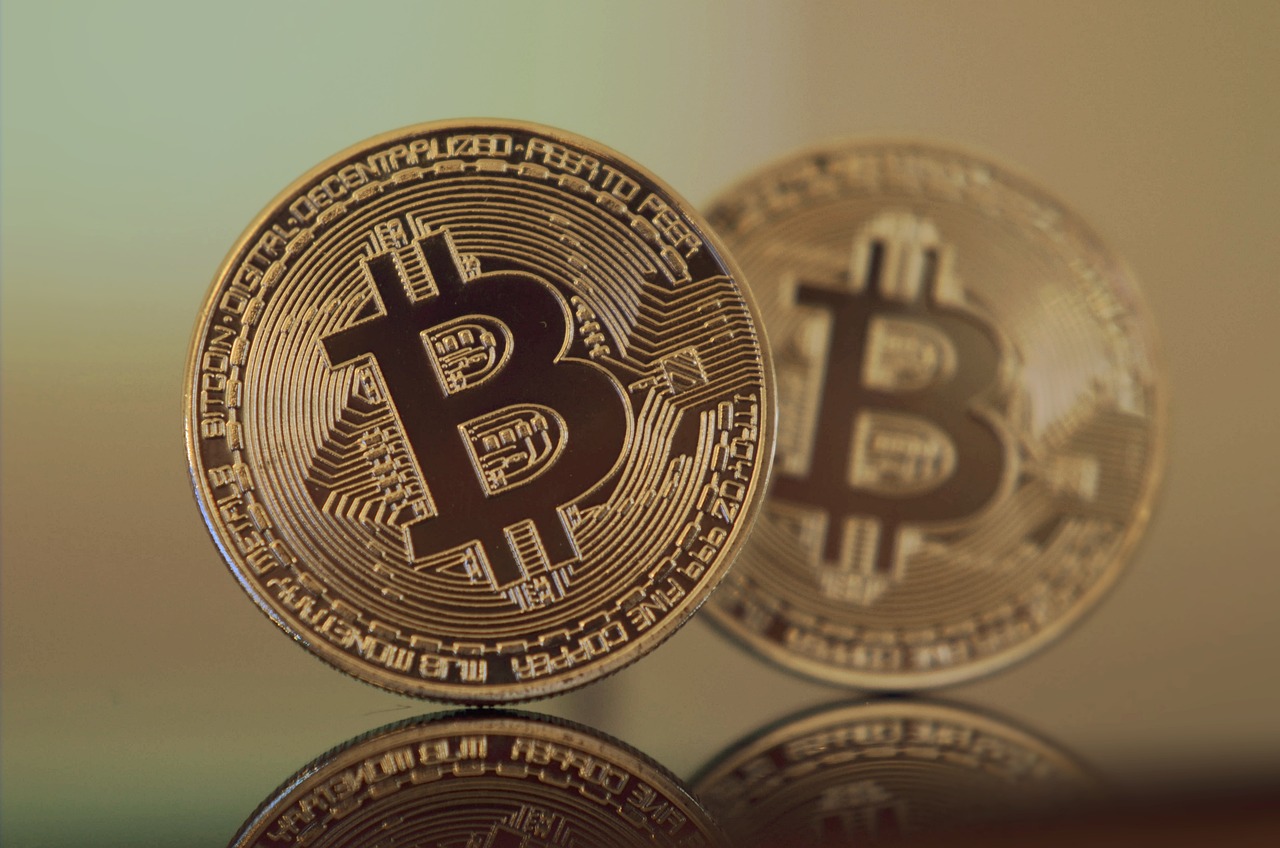
Understanding Cryptocurrencies
Cryptocurrencies are more than just a buzzword; they represent a revolutionary shift in how we perceive and interact with money. At their core, cryptocurrencies are digital or virtual currencies that use cryptography for security. Unlike traditional currencies issued by governments, known as fiat currencies, cryptocurrencies operate on decentralized networks based on blockchain technology. This decentralized nature means they are not controlled by any single entity, which can be a double-edged sword. On one hand, it offers users greater autonomy and privacy; on the other, it can lead to significant volatility and uncertainty.
To truly grasp the impact of cryptocurrencies, it’s essential to understand how they differ from traditional currencies. While fiat currencies are tangible and backed by governments, cryptocurrencies exist solely in digital form. They are created through a process called mining or through initial coin offerings (ICOs), and their value is determined by market demand rather than intrinsic value. This leads to fascinating dynamics in the investment landscape, as cryptocurrencies can experience rapid price fluctuations. For instance, Bitcoin, the first and most well-known cryptocurrency, has seen its price soar to nearly $65,000 and plummet below $30,000 within a year. Such volatility can be exhilarating for traders but terrifying for conservative investors.
Moreover, cryptocurrencies are designed to provide certain advantages over traditional financial systems. They can facilitate faster and cheaper transactions across borders without the need for intermediaries like banks. This can be particularly beneficial in regions with underdeveloped banking infrastructure. Additionally, cryptocurrencies offer the potential for financial inclusion for the unbanked population, allowing them to participate in the global economy.
However, with great potential comes great risk. The lack of regulation in the cryptocurrency market can lead to fraud, market manipulation, and security breaches. Investors need to be aware of these risks and conduct thorough research before diving into this volatile asset class. It’s also worth noting that the regulatory landscape is evolving, with governments around the world grappling with how to approach cryptocurrencies. This ongoing evolution can create both opportunities and challenges for investors.
In summary, understanding cryptocurrencies involves recognizing their unique characteristics, advantages, and risks. They are reshaping the financial landscape and challenging the traditional notions of money and investment. As we delve deeper into the impact of cryptocurrencies on traditional asset classes, it’s crucial to keep these foundational concepts in mind.

Crypto vs. Stocks
When it comes to investing, the debate between cryptocurrencies and stocks is heating up like never before. Investors are increasingly drawn to the allure of digital currencies, but how do they stack up against traditional equity investments? To understand this, we need to dive into the intricacies of both asset classes and explore their unique characteristics.
First off, let's talk about volatility. Cryptocurrencies are notorious for their wild price swings. Just think of Bitcoin's meteoric rise and fall over the years. In contrast, while stocks can certainly be volatile, they tend to exhibit more stability over time. This difference in volatility can be a double-edged sword. On one hand, the potential for high returns in crypto can be tempting; on the other, the risk of significant losses can keep more cautious investors at bay.
Consider this: a single tweet from a prominent figure can send the price of a cryptocurrency soaring or plummeting within minutes. This kind of rapid fluctuation is less common in the stock market, where price changes are often driven by earnings reports, economic indicators, and other fundamental factors. For investors seeking stability and growth, this volatility can be a huge concern. It's like trying to ride a rollercoaster without a safety harness—exciting but potentially dangerous!
So, how can investors navigate this turbulent sea of volatility? One effective strategy is diversification. By including both cryptocurrencies and stocks in their portfolios, investors can potentially mitigate risk. Think of it as not putting all your eggs in one basket. Additionally, employing stop-loss orders can help protect against sudden downturns in the crypto market. These strategies enable investors to enjoy the benefits of both asset classes while managing their exposure to risk.
Another fascinating aspect of the relationship between crypto and stocks is the influence of investor sentiment. The mood of the market can sway dramatically based on news cycles, regulatory developments, or even social media trends. For instance, a surge in crypto enthusiasm might lead to increased investment in tech stocks, as investors become more comfortable with the idea of digital assets. Conversely, negative sentiment towards cryptocurrencies can lead to a sell-off in both markets. It's a delicate dance that investors must navigate carefully.
Let's not forget about the growing interest from institutional investors in the world of cryptocurrencies. Over the past few years, we've seen major financial institutions begin to dip their toes into the crypto waters. This shift could reshape the stock market landscape as more traditional investors start to recognize the potential of digital assets. Imagine the impact if a significant portion of institutional capital were to flow into cryptocurrencies—this could legitimize the market even further and potentially stabilize prices over time.
In conclusion, while cryptocurrencies and stocks each have their own set of advantages and disadvantages, the key takeaway is that they can coexist in an investor's portfolio. Whether you're a seasoned trader or just starting out, understanding the nuances of both asset classes can empower you to make informed investment decisions. So, which side will you choose in this thrilling financial showdown?
- Are cryptocurrencies a good investment compared to stocks?
It depends on your risk tolerance and investment goals. Cryptocurrencies can offer high returns but come with significant risks. - How can I manage risks when investing in cryptocurrencies?
Diversification, stop-loss orders, and staying informed about market trends can help manage risks. - What is the future of cryptocurrencies in relation to traditional stocks?
As institutional adoption grows, cryptocurrencies may become more integrated into traditional investment strategies.

Market Volatility
The world of cryptocurrencies is notorious for its , and this characteristic significantly differentiates it from traditional stock markets. Imagine standing on a roller coaster, feeling the thrill of the ups and downs; that’s what investing in cryptocurrencies often feels like. Prices can skyrocket to unimaginable heights one day, only to plummet the next. For instance, Bitcoin, the flagship cryptocurrency, has experienced price swings that can exceed 10% in a single day. This kind of volatility can be exhilarating for those looking to make quick profits, but it can also be terrifying for investors seeking stability.
In contrast, traditional stocks tend to exhibit more gradual price movements, primarily influenced by company performance, economic indicators, and market sentiment. While stocks can certainly be volatile, they rarely experience the extreme fluctuations seen in the cryptocurrency market. This disparity raises an important question for investors: Is the potential for high returns worth the risk of steep losses? For many, the answer lies in a careful evaluation of their risk tolerance and investment strategy.
To illustrate the differences in volatility, let’s take a look at a comparison of the annualized volatility of Bitcoin versus a selection of major stock indices:
| Asset Class | Annualized Volatility (%) |
|---|---|
| Bitcoin | 70% |
| S&P 500 | 15% |
| Dow Jones Industrial Average | 13% |
| NASDAQ Composite | 20% |
This stark contrast highlights why many investors view cryptocurrencies as a high-risk, high-reward investment. The potential for significant gains is undoubtedly appealing, but the risk of substantial losses is a reality that cannot be ignored. It’s crucial for investors to adopt a clear strategy when navigating this volatile landscape. Some may choose to engage in day trading, capitalizing on short-term price movements, while others might prefer a long-term approach, holding onto their investments through the inevitable ups and downs.
Furthermore, the volatility of cryptocurrencies can also impact investor sentiment. When prices are soaring, excitement and optimism can lead to increased buying activity. Conversely, when the market dips, fear and uncertainty can trigger panic selling. This emotional roller coaster can create a cycle of volatility that further exacerbates price swings, making it essential for investors to remain level-headed and informed.
In conclusion, while the volatility of the cryptocurrency market presents unique opportunities for profit, it also poses significant risks. Investors must weigh their options carefully, considering their financial goals and risk tolerance. As the landscape continues to evolve, understanding the nature of market volatility will be key to successfully navigating the intersection of cryptocurrencies and traditional asset classes.
- What causes cryptocurrency market volatility? - Market volatility in cryptocurrencies can be attributed to various factors, including market speculation, regulatory news, technological advancements, and macroeconomic trends.
- How can I manage risk in a volatile market? - Strategies such as diversifying your portfolio, setting stop-loss orders, and conducting thorough research can help mitigate risks associated with market volatility.
- Is it possible to predict cryptocurrency price movements? - While some analysts use technical analysis and market indicators to forecast price movements, the inherent unpredictability of the market makes accurate predictions challenging.

Risk Management Strategies
When it comes to integrating cryptocurrencies into stock portfolios, risk management becomes a crucial aspect that every investor needs to consider. The volatile nature of cryptocurrencies can be likened to a roller coaster ride; thrilling but potentially perilous without proper precautions. So, how can investors navigate this thrilling landscape while minimizing their exposure to risk? Here are some strategies that can help:
First and foremost, one of the most effective methods is to diversify your portfolio. Just like a well-balanced diet, a well-diversified investment strategy can help mitigate risk. By spreading investments across various asset classes—stocks, bonds, real estate, and cryptocurrencies—you can cushion the blow when one sector experiences a downturn. For example, if cryptocurrencies take a hit, your stocks or bonds might still perform well, helping to stabilize your overall returns.
Another important strategy is to set stop-loss orders. This is akin to having a safety net. By establishing a predetermined price at which you will sell a cryptocurrency, you can prevent significant losses. For instance, if you buy Bitcoin at $50,000 and set a stop-loss order at $45,000, you ensure that you’ll exit the position before the losses escalate further. This method empowers you to take control of your investments, reducing the emotional stress that often accompanies trading.
Additionally, employing position sizing is essential. This means determining how much of your total capital you are willing to risk on a single trade. A common approach is to limit each individual trade to a small percentage of your overall portfolio—typically between 1% and 3%. This way, even if a trade goes south, it won’t significantly impact your overall financial health.
Moreover, keeping an eye on market trends and conducting thorough research can also help in managing risk. Staying updated on regulatory changes, technological advancements, and market sentiment can provide insights into potential risks and opportunities. Utilizing tools such as technical analysis can guide your decisions, helping you to make informed choices rather than relying solely on gut feelings.
Finally, consider using hedging strategies to protect your investments. This could involve options trading or investing in inverse exchange-traded funds (ETFs) that gain value when the market declines. These strategies can act as a buffer against volatility, providing a level of security in uncertain times.
In summary, while the world of cryptocurrencies can be exhilarating, it’s essential to approach it with a solid risk management plan. By diversifying your portfolio, setting stop-loss orders, practicing position sizing, staying informed about market trends, and employing hedging strategies, you can enjoy the thrill of cryptocurrency investing while safeguarding your financial future.
- What is risk management in cryptocurrency investing? Risk management refers to the strategies and techniques used to minimize potential losses in investments, particularly in volatile markets like cryptocurrencies.
- How can diversification help in managing risk? Diversification spreads your investments across different asset classes, which can reduce the impact of a poor-performing asset on your overall portfolio.
- What are stop-loss orders, and how do they work? A stop-loss order is a predetermined price at which an investor will sell a cryptocurrency to prevent further losses.
- What is position sizing? Position sizing involves determining how much of your total capital to risk on a single trade, helping to limit potential losses.
- How can market trends affect my investment decisions? Staying informed about market trends can help you make better investment decisions and anticipate potential risks and opportunities.
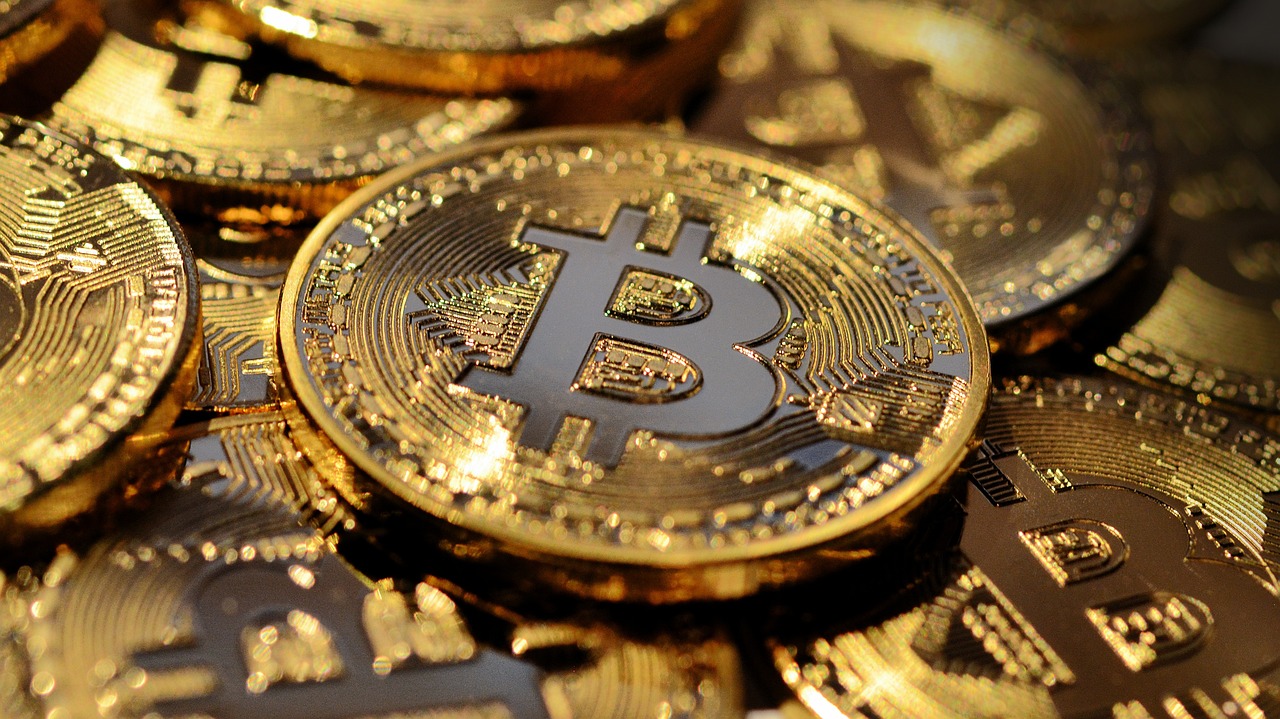
Investor Sentiment
The world of investment is often driven by emotions and perceptions, and cryptocurrencies are no exception. In fact, the sentiment surrounding digital currencies can significantly impact not just their own market but also the broader stock market. When investors feel optimistic about cryptocurrencies, it can create a ripple effect that boosts stock valuations. Conversely, a wave of negativity can lead to declines across various asset classes. But what exactly drives this sentiment?
One major factor influencing investor sentiment is media coverage. When a cryptocurrency makes headlines—whether due to a major price surge, regulatory news, or technological advancements—investors often react emotionally. This can lead to a herd mentality, where individuals follow the crowd rather than conducting their own research. For example, a positive news story about Bitcoin's adoption by a major corporation can ignite enthusiasm among stock investors, prompting them to buy into related tech stocks.
Moreover, social media platforms have become a hotbed for discussions about cryptocurrencies. Platforms like Twitter and Reddit can amplify investor sentiment, creating a feedback loop that can drive prices up or down. A single tweet from a high-profile influencer can send shockwaves through the market, demonstrating just how powerful sentiment can be. Investors must navigate this landscape carefully, as the buzz can often lead to speculative bubbles that may not be grounded in reality.
Additionally, market cycles play a crucial role in shaping investor sentiment. During bullish cycles, investors tend to be more optimistic, leading to increased buying activity. In contrast, bearish cycles often result in fear and panic selling. The cryptocurrency market is notorious for its volatility, which can exacerbate these cycles. Investors should be aware of these emotional swings and consider employing strategies to mitigate their impact.
To gauge investor sentiment more effectively, analysts often look at various indicators, including:
- Fear and Greed Index: This tool measures the emotions driving the market, helping investors understand whether the market is in a state of fear or greed.
- Trading Volume: High trading volumes can indicate strong sentiment, either positive or negative, depending on the direction of the price movement.
- Social Media Sentiment Analysis: Tools that analyze social media chatter can provide insights into how investors feel about particular cryptocurrencies or the market as a whole.
In conclusion, understanding investor sentiment is crucial for anyone looking to navigate the complex landscape of cryptocurrencies and traditional investments. By recognizing the emotional drivers behind market movements, investors can make more informed decisions and potentially capitalize on the opportunities presented by the intersection of these asset classes.
- What is investor sentiment? Investor sentiment refers to the overall attitude of investors towards a particular market or asset, often influenced by emotions and perceptions.
- How does sentiment affect cryptocurrency prices? Positive sentiment can lead to increased buying activity, driving prices up, while negative sentiment can result in panic selling and price declines.
- What tools can I use to gauge investor sentiment? Tools like the Fear and Greed Index, trading volume analysis, and social media sentiment analysis can help investors understand market emotions.
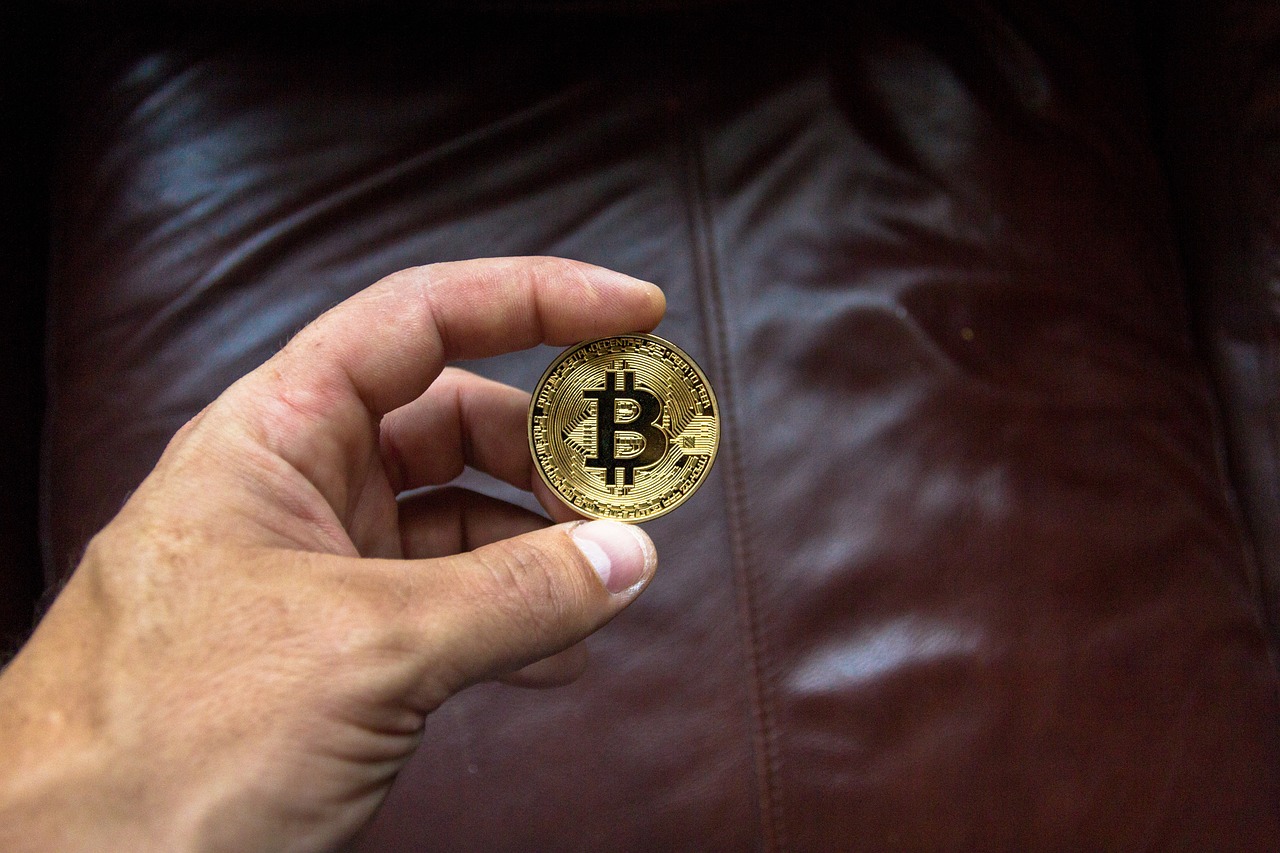
Institutional Adoption
The landscape of cryptocurrency is rapidly evolving, and one of the most significant changes is the growing interest from institutional investors. Just a few years ago, cryptocurrencies were primarily the domain of individual traders and tech enthusiasts, often perceived as a risky gamble. However, as the technology has matured and regulatory frameworks have begun to take shape, institutional players are now stepping into the arena, bringing with them a wave of legitimacy and capital that could reshape the entire investment landscape.
Why are institutions showing such a keen interest in cryptocurrencies? For starters, they are attracted by the potential for high returns. Many institutional investors are always on the lookout for opportunities that can provide diversification and enhance their portfolios. With traditional asset classes like stocks and bonds offering relatively low yields, cryptocurrencies present an enticing alternative. Think of it as a new frontier in the investment world—much like the tech boom of the late 1990s, but this time, the stakes are digital.
Moreover, the entry of institutional investors is not just about capital; it’s also about credibility. When large firms like Goldman Sachs, Fidelity, and BlackRock begin to offer cryptocurrency services or invest in digital assets, it sends a powerful message to the market. This institutional adoption can lead to increased confidence among retail investors, which in turn can drive up demand and prices. Just imagine how a stamp of approval from these financial giants can transform public perception—suddenly, cryptocurrencies are not just a speculative asset but a legitimate investment option.
However, the journey towards widespread institutional adoption is not without its challenges. Regulatory hurdles remain a significant concern. Institutions often require clear guidelines and frameworks to operate within, and the regulatory landscape for cryptocurrencies is still very much in flux. Institutions are also wary of the market volatility that has characterized cryptocurrencies, which can deter them from fully committing their resources. As a result, many are taking a cautious approach, gradually integrating digital assets into their investment strategies.
To navigate these challenges, institutions are employing various strategies. Some are opting for a hybrid approach, where they combine traditional assets with a small allocation to cryptocurrencies to test the waters. Others are investing in blockchain technology itself, recognizing its potential to revolutionize various sectors. By doing so, they not only gain exposure to the crypto market but also position themselves at the forefront of technological innovation.
As more institutions enter the space, we can expect to see a shift in the dynamics of the crypto market. Increased liquidity and more sophisticated trading strategies could lead to greater price stability. Additionally, the involvement of institutional players may pave the way for more robust regulatory frameworks, which could further legitimize the market. All of this points to a future where cryptocurrencies are not just an alternative investment but a fundamental component of a diversified portfolio.
- What is institutional adoption in cryptocurrency? Institutional adoption refers to the increasing involvement of large organizations, such as banks and investment firms, in the cryptocurrency market.
- Why are institutions interested in cryptocurrencies? Institutions seek high returns, diversification, and the potential for innovation in their investment strategies.
- What challenges do institutions face in adopting cryptocurrencies? Regulatory uncertainty, market volatility, and the need for clear guidelines are significant challenges for institutions.
- How does institutional adoption affect the cryptocurrency market? It can lead to increased legitimacy, higher liquidity, and potentially greater price stability in the crypto market.
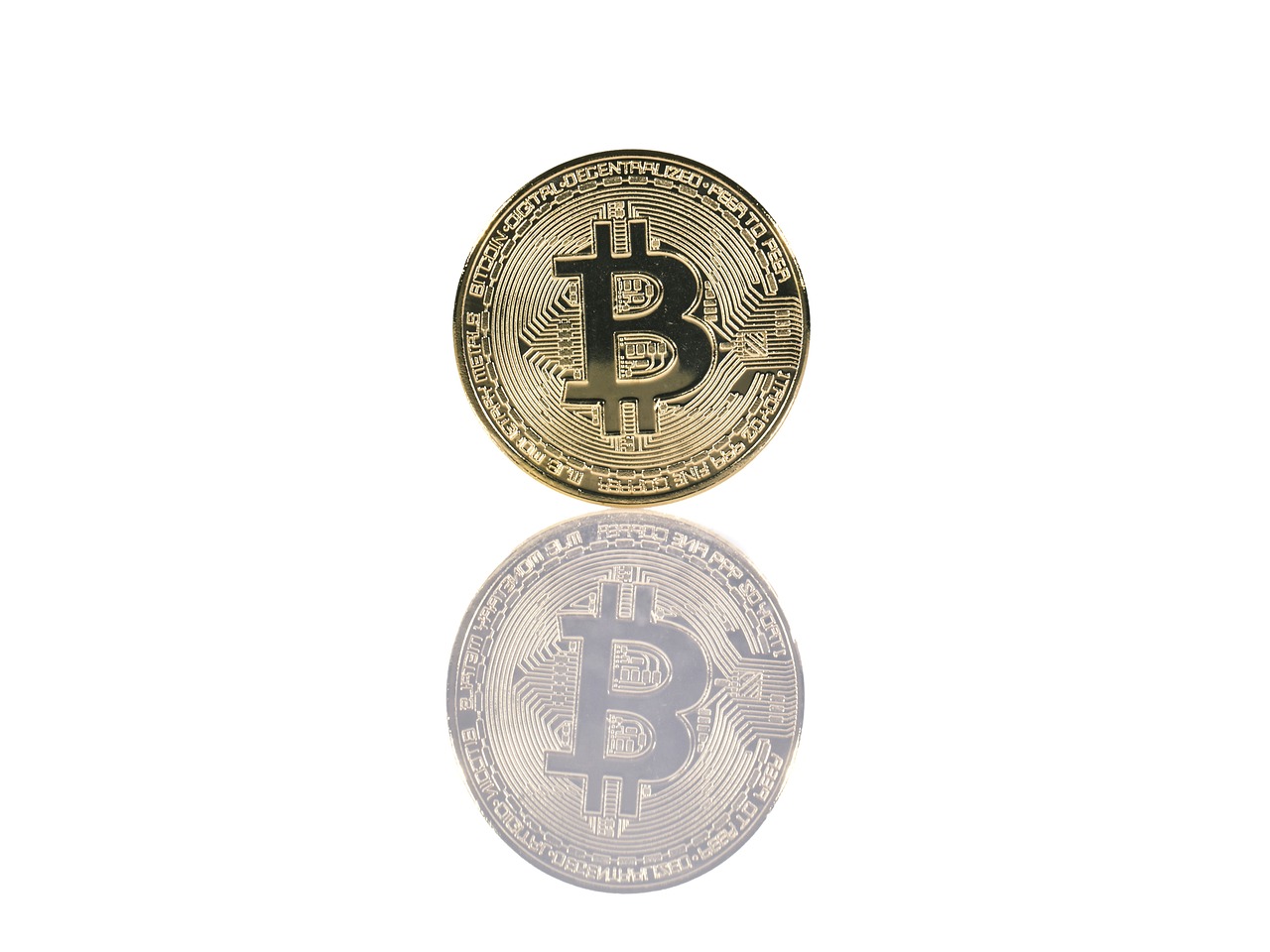
Crypto and Bonds
In the ever-evolving landscape of finance, cryptocurrencies are making waves that extend beyond their own digital realm, particularly impacting the world of bonds. Traditionally viewed as a safe haven for conservative investors, bonds have long been the bedrock of fixed-income investments. However, the rise of digital assets is challenging this conventional wisdom, prompting investors to reassess their strategies. So, how exactly are cryptocurrencies influencing the bond market?
One of the most significant impacts of cryptocurrencies on bonds is the shift in perception. Investors are increasingly viewing cryptocurrencies not just as speculative assets but as potential alternatives to traditional fixed-income securities. This shift is not merely a trend; it represents a fundamental change in how investors allocate their portfolios. With the allure of high returns from cryptocurrencies, many are starting to question the reliability and performance of traditional bonds. For instance, while bonds typically offer lower yields, the volatility and potential for high returns in the crypto market can be enticing for those willing to take on more risk.
Moreover, the emergence of decentralized finance (DeFi) platforms is further complicating the bond landscape. DeFi allows users to lend and borrow assets without the need for traditional financial intermediaries. This innovation is creating new opportunities for investors, enabling them to earn yields on their crypto holdings that far exceed those available in the bond market. As a result, we are witnessing a growing trend of investors reallocating their funds from bonds into crypto-based financial products.
To illustrate this shift, let’s consider the following table that compares the typical yields of traditional bonds versus potential returns from selected cryptocurrencies:
| Asset Class | Average Yield (%) | Risk Level |
|---|---|---|
| Government Bonds | 1.5 - 3.0 | Low |
| Corporate Bonds | 3.0 - 5.0 | Medium |
| Bitcoin | Varies (historically >100% in bull markets) | High |
| Ethereum | Varies (historically >100% in bull markets) | High |
This table clearly shows that while traditional bonds offer stability, the potential returns from cryptocurrencies can be dramatically higher, albeit with increased risk. For many investors, this presents a dilemma: do they stick with the safety of bonds, or do they venture into the unpredictable waters of crypto?
Another crucial aspect to consider is the role of cryptocurrencies as a hedge against inflation. With central banks around the world adopting expansive monetary policies, concerns over inflation have surged. Cryptocurrencies, especially Bitcoin, are often touted as a potential hedge against inflation due to their limited supply. This characteristic can make them an attractive alternative for investors who are wary of the eroding purchasing power of traditional currency and, by extension, the fixed income from bonds.
However, it’s essential for investors to approach this landscape with caution. The integration of cryptocurrencies into bond portfolios necessitates a robust risk management strategy. Investors must consider how much of their portfolio they are willing to allocate to cryptocurrencies, balancing the potential for high returns with the inherent risks. This might involve setting clear limits on exposure or employing hedging strategies to mitigate potential losses.
In conclusion, the intersection of cryptocurrencies and bonds is a fascinating area of exploration. As digital assets continue to gain traction, investors must remain vigilant and adaptable. The traditional bond market is not immune to the influence of cryptocurrencies, and understanding this dynamic could very well shape the future of investment strategies.
- How do cryptocurrencies affect bond yields? Cryptocurrencies can lead to lower demand for bonds, which may pressure yields upward as investors seek higher returns in the crypto market.
- Are cryptocurrencies a safe alternative to bonds? While cryptocurrencies can offer high returns, they come with significant risks, making them less stable than traditional bonds.
- Can cryptocurrencies serve as a hedge against inflation? Yes, many investors view cryptocurrencies like Bitcoin as a hedge against inflation due to their limited supply.

Yield Comparisons
When it comes to investing, one of the most critical factors that investors consider is yield. Yield essentially refers to the income generated from an investment, typically expressed as a percentage of the investment's cost. In the case of traditional bonds, yields are often predictable and stable, providing a reliable income stream for investors. However, the rise of cryptocurrencies has introduced a new dynamic into the investment landscape, prompting many to ask: how do the yields from cryptocurrencies compare to those from traditional bonds?
To put things into perspective, let’s consider the different types of yields available in both asset classes. Traditional bonds, depending on their type—government, municipal, or corporate—can offer yields that range from 1% to 5% or more, depending on the credit quality and duration of the bond. On the other hand, cryptocurrencies can exhibit wildly different yield potential. For instance, staking certain cryptocurrencies or participating in decentralized finance (DeFi) protocols can yield returns that skyrocket into the double digits, often ranging from 5% to 20% or even higher. However, these high yields come with a caveat: the risk associated with cryptocurrencies is significantly greater than that of traditional bonds.
To illustrate this further, let’s take a look at a simple comparison table:
| Investment Type | Typical Yield | Risk Level |
|---|---|---|
| Government Bonds | 1% - 3% | Low |
| Corporate Bonds | 3% - 5% | Medium |
| Cryptocurrency Staking | 5% - 20%+ | High |
| DeFi Yield Farming | 10% - 100%+ | Very High |
As you can see from the table, while cryptocurrencies can potentially offer much higher yields, they also carry a significantly higher risk. The volatility inherent in the crypto market means that while you might enjoy substantial returns in one period, the next could bring drastic losses. For instance, a DeFi investment promising a 100% yield could easily drop to zero if the protocol is compromised or if the market crashes. This stark contrast in risk and reward is something every investor must weigh carefully before diving into the world of cryptocurrencies.
Moreover, the perception of yield is also influenced by macroeconomic factors such as inflation and interest rates. In an environment of rising inflation, traditional bonds may struggle to keep up with the cost of living, making cryptocurrencies an attractive alternative for those seeking to preserve their purchasing power. However, the unpredictable nature of crypto yields can deter risk-averse investors who prefer the stability of fixed-income securities.
In conclusion, while cryptocurrencies offer enticing yield opportunities that can surpass those of traditional bonds, they come with a level of risk that is not suitable for every investor. Understanding these differences is crucial for making informed investment decisions. As the investment landscape continues to evolve, those who can navigate the complexities of both asset classes will be best positioned to capitalize on the opportunities that arise.
- What is yield in investment terms? Yield refers to the income generated from an investment, expressed as a percentage of the investment's cost.
- How do cryptocurrency yields compare to traditional bond yields? Cryptocurrency yields can range from 5% to over 100%, while traditional bonds typically yield between 1% and 5%.
- What are the risks associated with cryptocurrency investments? Cryptocurrencies are highly volatile, and investments can fluctuate dramatically, leading to potential losses.
- Can cryptocurrencies act as a hedge against inflation? Yes, some investors view cryptocurrencies as a way to protect their purchasing power during inflationary periods.
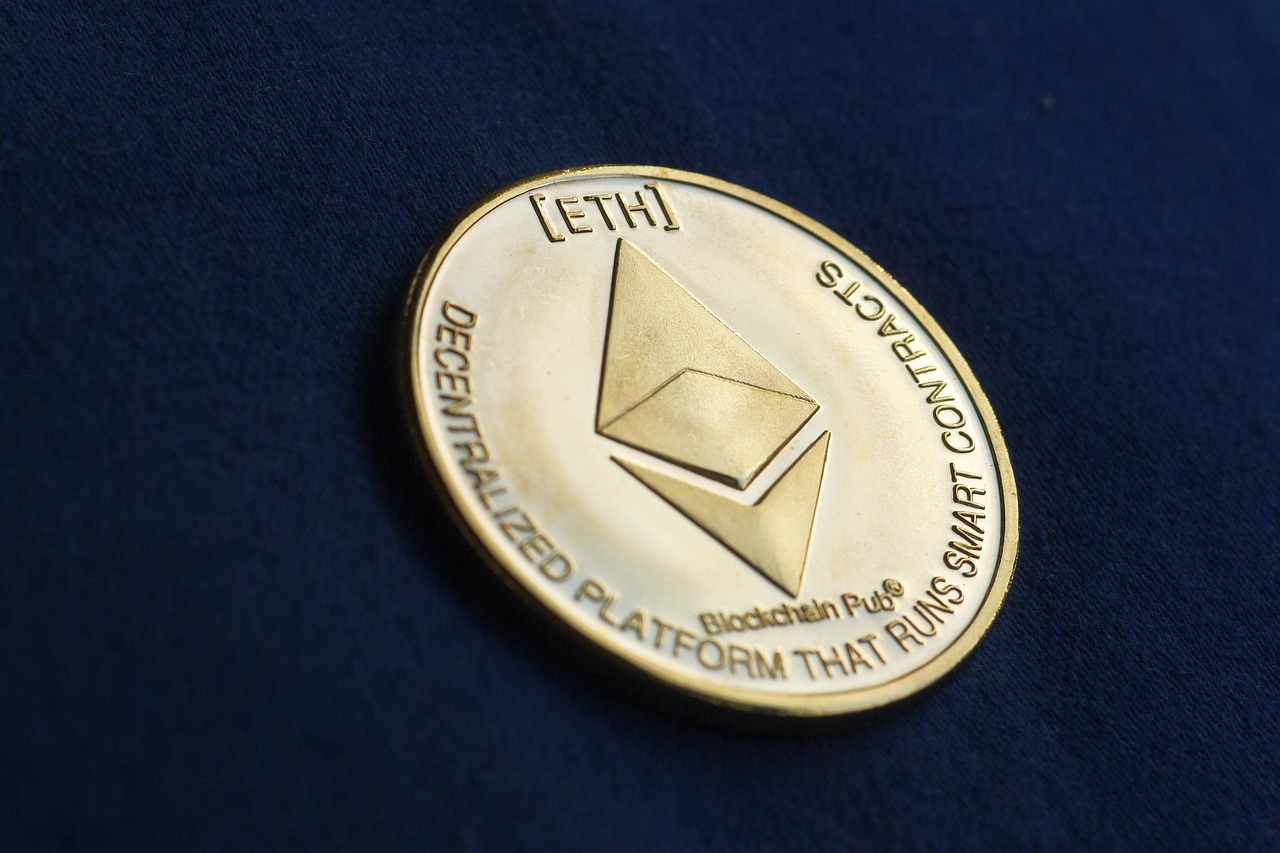
Inflation Hedge
In recent years, the conversation around inflation has intensified, leaving many investors scrambling for effective strategies to protect their portfolios. With traditional assets like bonds often failing to keep pace with rising prices, investors are increasingly turning to cryptocurrencies as a potential hedge against inflation. But what exactly does this mean, and how does it work?
To understand the role of cryptocurrencies in combating inflation, we first need to grasp the fundamental nature of these digital assets. Unlike fiat currencies, which can be printed at will by governments, many cryptocurrencies, such as Bitcoin, have a capped supply. This scarcity is akin to precious metals like gold, making them attractive to investors looking for a store of value during times of economic uncertainty. As inflation erodes the purchasing power of traditional currencies, cryptocurrencies stand out as a potential sanctuary for wealth preservation.
One of the key advantages of cryptocurrencies is their decentralization. While fiat currencies are subject to the whims of central banks and government policies, cryptocurrencies operate on a peer-to-peer network, making them less vulnerable to manipulation. This independence can provide a sense of security for investors who are wary of government intervention in the economy.
However, it’s essential to recognize that investing in cryptocurrencies as an inflation hedge is not without its risks. The volatility of the crypto market can be daunting. Prices can swing dramatically in a short period, which may deter conservative investors. Thus, while cryptocurrencies may offer a hedge against inflation, they also come with a level of uncertainty that traditional assets might not present.
To illustrate the potential of cryptocurrencies as an inflation hedge, consider the following table comparing the historical performance of Bitcoin against traditional inflation hedges like gold:
| Asset | Average Annual Return (Last 5 Years) | Inflation Hedge Effectiveness |
|---|---|---|
| Bitcoin | ~300% | High |
| Gold | ~10% | Moderate |
| US Treasury Bonds | ~3% | Low |
This table clearly shows that while Bitcoin has outperformed traditional assets significantly, it also highlights the inherent risks associated with such high returns. Investors must weigh the potential rewards against the volatility and uncertainty that cryptocurrencies can bring.
In conclusion, as inflation continues to challenge traditional investment strategies, cryptocurrencies are emerging as a viable alternative for those seeking to protect their wealth. However, due diligence is essential. Investors should consider their risk tolerance and investment goals before diving into the crypto space. By understanding the dynamics of cryptocurrencies and their potential role as an inflation hedge, investors can make informed decisions that align with their financial objectives.
- Can cryptocurrencies completely replace traditional inflation hedges? While they offer unique advantages, cryptocurrencies should be viewed as a complementary asset rather than a complete replacement.
- Are all cryptocurrencies good hedges against inflation? Not all cryptocurrencies have the same properties; it's essential to research and select those with capped supplies and strong fundamentals.
- How can I incorporate cryptocurrencies into my investment portfolio? Consider starting small and gradually increasing your exposure as you become more familiar with the crypto market.

Real Estate and Crypto
In recent years, the intersection of real estate and cryptocurrencies has sparked a wave of transformation in how properties are bought, sold, and invested in. As the digital age progresses, it's becoming increasingly clear that cryptocurrencies are not just a passing trend; they are reshaping the landscape of traditional investments, particularly in real estate. Imagine being able to purchase a property with a few clicks on your smartphone, bypassing the lengthy processes that have historically defined real estate transactions. This is the promise that cryptocurrencies and blockchain technology bring to the table.
One of the most significant impacts of cryptocurrencies on real estate is the concept of tokenization. Tokenization refers to the process of converting real estate assets into digital tokens that can be traded on a blockchain. This innovation not only increases liquidity in the real estate market but also makes property investments more accessible to a broader audience. For instance, instead of needing a substantial sum to buy a whole property, investors can purchase fractions of a property represented by tokens. This democratization of real estate investment allows individuals from various financial backgrounds to participate in the market.
Moreover, blockchain technology is revolutionizing property transactions by enhancing transparency and reducing the potential for fraud. Traditional real estate transactions often involve numerous intermediaries, such as agents, notaries, and banks, each taking a cut and adding layers of complexity. With blockchain, all transaction details are recorded in a decentralized ledger, providing a clear and immutable history of ownership. This not only simplifies the process but also builds trust among buyers and sellers.
However, while the integration of cryptocurrencies in real estate presents exciting opportunities, it also comes with challenges. Regulatory uncertainty remains a significant hurdle. Different countries have varying regulations regarding the use of cryptocurrencies, which can complicate cross-border transactions. Investors need to stay informed about the legal landscape to navigate these waters effectively.
Additionally, the volatility of cryptocurrencies can pose risks. The value of digital assets can fluctuate dramatically over short periods, which might affect the perceived value of real estate investments. To illustrate this point, consider the following table comparing the price fluctuations of Bitcoin and traditional real estate over the past year:
| Asset Class | Price Change (1 Year) |
|---|---|
| Bitcoin | +150% |
| Average Real Estate | +5% |
This table highlights the stark contrast in volatility between cryptocurrencies and traditional real estate. While the potential for high returns is enticing, investors must weigh this against the risks associated with such fluctuations.
In conclusion, the fusion of real estate and cryptocurrencies is paving the way for a new era of property investment. With innovations like tokenization and blockchain technology, the market is becoming more accessible, transparent, and efficient. However, as with any investment, it's crucial to conduct thorough research and consider both the opportunities and challenges that this evolving landscape presents.
- What is tokenization in real estate? Tokenization is the process of converting real estate assets into digital tokens, allowing for fractional ownership and increased liquidity.
- How does blockchain enhance real estate transactions? Blockchain provides a transparent and immutable record of transactions, reducing the risk of fraud and simplifying the buying and selling process.
- Are there risks associated with investing in real estate through cryptocurrencies? Yes, the volatility of cryptocurrencies and regulatory uncertainties can pose risks to investors.

Tokenization of Real Estate
Tokenization of real estate is a revolutionary concept that’s changing the way we think about property investment. Imagine being able to own a fraction of a high-rise building or a piece of prime real estate in a bustling city without having to cough up millions of dollars. This is the promise of tokenization, where real estate assets are converted into digital tokens on a blockchain, enabling fractional ownership and making property investment accessible to a broader audience. But what does this really mean for the average investor?
At its core, tokenization leverages blockchain technology to create a digital representation of a physical asset. Each token represents a share of ownership in the property, allowing multiple investors to pool their resources. This process not only democratizes access to real estate but also enhances liquidity. Traditionally, selling a property can be a lengthy process, often taking months or even years. However, with tokenized real estate, transactions can occur in a matter of minutes, as tokens can be bought and sold on various digital platforms.
One of the most significant benefits of tokenizing real estate is the increased liquidity it offers. Investors can buy and sell their tokens as easily as they would trade stocks, which is a game-changer for those who may need quick access to cash or want to diversify their investment portfolios without the hassle of traditional real estate transactions. Moreover, tokenization can lower the barriers to entry, allowing investors to purchase smaller stakes in high-value properties, which was previously unattainable for the average individual.
However, the tokenization process is not without its challenges. Regulatory issues can pose significant hurdles, as laws governing real estate and securities vary widely across jurisdictions. Investors must navigate these complexities to ensure compliance, which can be daunting. Additionally, the technology itself needs to be robust and secure to protect against fraud and hacking, which are real concerns in the digital asset space.
To further illustrate the potential of tokenization in real estate, consider the following table that highlights key benefits and challenges:
| Benefits | Challenges |
|---|---|
| Fractional Ownership | Regulatory Compliance |
| Increased Liquidity | Technology Vulnerability |
| Lower Barriers to Entry | Market Education |
| Global Access to Investments | Valuation Uncertainties |
In conclusion, the tokenization of real estate represents a significant shift in how we approach property investment. While it opens up exciting opportunities for investors, it also requires careful consideration of the associated risks and challenges. As the technology matures and regulations evolve, we may very well see tokenization become a mainstream method of investing in real estate, transforming the landscape of property ownership as we know it.
- What is tokenization in real estate? Tokenization is the process of converting real estate assets into digital tokens on a blockchain, allowing for fractional ownership and easier transactions.
- How does tokenization benefit investors? It provides increased liquidity, lower barriers to entry, and the ability to invest in high-value properties without requiring substantial capital.
- Are there risks associated with tokenized real estate? Yes, challenges include regulatory compliance, technology vulnerabilities, and market education regarding this relatively new investment method.
- Can anyone invest in tokenized real estate? Generally, yes, as tokenization allows for smaller investments, but specific regulations may vary by region.

Blockchain in Property Transactions
In recent years, the real estate market has witnessed a significant transformation thanks to the advent of blockchain technology. This innovative technology is not just a buzzword; it is reshaping how property transactions are conducted, making them more efficient, transparent, and secure. Imagine a world where buying a house is as easy as sending an email. Sounds dreamy, right? Well, blockchain is making that dream a reality by eliminating many of the traditional hurdles that have long plagued real estate transactions.
At its core, blockchain is a decentralized digital ledger that records transactions across multiple computers. This means that once a transaction is made, it is nearly impossible to alter or delete it, ensuring a high level of security and trust. In the context of property transactions, this technology can streamline the entire process—from property listing to closing—by providing a transparent record that all parties can access. No more waiting for paperwork to shuffle through various hands; everything can be verified in real-time.
One of the most exciting applications of blockchain in real estate is the concept of smart contracts. These are self-executing contracts with the terms of the agreement directly written into code. When certain conditions are met, the contract automatically executes, eliminating the need for intermediaries like real estate agents or lawyers. This not only cuts down on costs but also speeds up the transaction process significantly. Imagine buying a property and having the keys handed over to you in a matter of hours instead of weeks!
Furthermore, blockchain enhances transparency in property transactions. Every transaction is recorded on the blockchain, creating a permanent and unchangeable history of ownership. This drastically reduces the risk of fraud, as potential buyers can easily verify the legitimacy of property titles and ownership history. In an industry where trust is paramount, this level of transparency can be a game-changer.
However, while the benefits of blockchain are compelling, there are also challenges to consider. The adoption of this technology requires a shift in mindset among industry professionals and regulatory bodies. Many are still hesitant to embrace such a revolutionary change. Additionally, the legal frameworks surrounding property transactions may need to evolve to accommodate blockchain technology fully.
In summary, blockchain is poised to revolutionize property transactions by making them more efficient, transparent, and secure. As this technology continues to gain traction, we can expect to see an increasing number of real estate transactions conducted on blockchain platforms, paving the way for a new era in property investment. The future of real estate is here, and it’s built on the foundation of blockchain technology.
- What is blockchain technology?
Blockchain technology is a decentralized digital ledger that records transactions across multiple computers, ensuring security and transparency.
- How do smart contracts work in real estate?
Smart contracts are self-executing contracts with the terms directly written into code, which execute automatically when conditions are met.
- What are the benefits of using blockchain in property transactions?
Benefits include increased efficiency, reduced costs, enhanced transparency, and improved security against fraud.
- Are there challenges to adopting blockchain in real estate?
Yes, challenges include regulatory hurdles, the need for industry-wide acceptance, and potential changes to legal frameworks.

Commodities and Digital Assets
In recent years, the relationship between commodities and digital assets, particularly cryptocurrencies, has become increasingly complex and intertwined. As traditional markets evolve, investors are beginning to see how digital currencies can influence commodity pricing and investment strategies. This shift is not just a fleeting trend; it represents a fundamental change in how we perceive value, scarcity, and investment opportunities.
Historically, commodities like gold, silver, and oil have been viewed as safe havens during economic turmoil. However, with the rise of cryptocurrencies, many investors are now weighing the potential of digital assets against these traditional commodities. The question arises: can Bitcoin, for instance, truly serve as a store of value comparable to gold? Both assets possess unique characteristics that appeal to different types of investors.
One of the most significant impacts of cryptocurrencies on the commodities market is the emergence of new trading strategies. Digital assets have introduced innovative approaches to trading that were previously unimaginable. For example, the use of blockchain technology allows for greater transparency and efficiency in commodity trading. This innovation can lead to reduced costs and faster transaction times, making it easier for investors to enter and exit positions.
Moreover, the introduction of tokenized commodities is reshaping the investment landscape. Tokenization refers to the process of converting physical assets into digital tokens that can be traded on blockchain platforms. This method not only enhances liquidity but also democratizes access to investments that were once reserved for wealthy individuals or institutional investors. Imagine being able to invest in a fraction of a barrel of oil or a share of gold—all thanks to the power of digital assets!
To further illustrate the dynamic relationship between commodities and digital assets, let’s take a look at a comparison of how Bitcoin and gold are perceived in today's market:
| Feature | Bitcoin | Gold |
|---|---|---|
| Liquidity | High - Easily traded on various exchanges | Moderate - Requires physical handling and storage |
| Volatility | High - Subject to rapid price fluctuations | Low - Generally stable over time |
| Inflation Hedge | Potential - Limited supply may protect against inflation | Established - Historically a safe haven during inflation |
| Market Acceptance | Growing - Increasing adoption by institutions | Established - Long-standing acceptance as a valuable asset |
As we navigate through this new landscape, it’s essential to consider how these digital assets are influencing traditional commodity investments. Investors are increasingly asking themselves whether they should diversify their portfolios by incorporating cryptocurrencies alongside their existing commodity holdings. This blend of assets could potentially lead to enhanced returns and better risk management.
However, with opportunity comes risk. The volatility of cryptocurrencies poses a challenge for investors who rely on the stability of commodities. Therefore, it’s crucial to approach this new investment paradigm with caution and a well-thought-out strategy. Understanding the nuances of both markets will be key to making informed decisions that align with individual risk tolerance and investment goals.
- How do cryptocurrencies affect commodity prices?
Cryptocurrencies can influence commodity prices by attracting investment away from traditional assets, creating new demand dynamics and altering perceptions of value. - Can Bitcoin replace gold as a safe haven?
While Bitcoin offers some similar properties, its high volatility makes it less reliable than gold for risk-averse investors seeking stability. - What is tokenization in commodities?
Tokenization is the process of converting physical commodities into digital tokens, allowing for fractional ownership and easier trading on blockchain platforms. - Are cryptocurrencies a good investment alongside commodities?
Incorporating cryptocurrencies can diversify a portfolio, but investors should weigh the associated risks and volatility against their investment strategies.
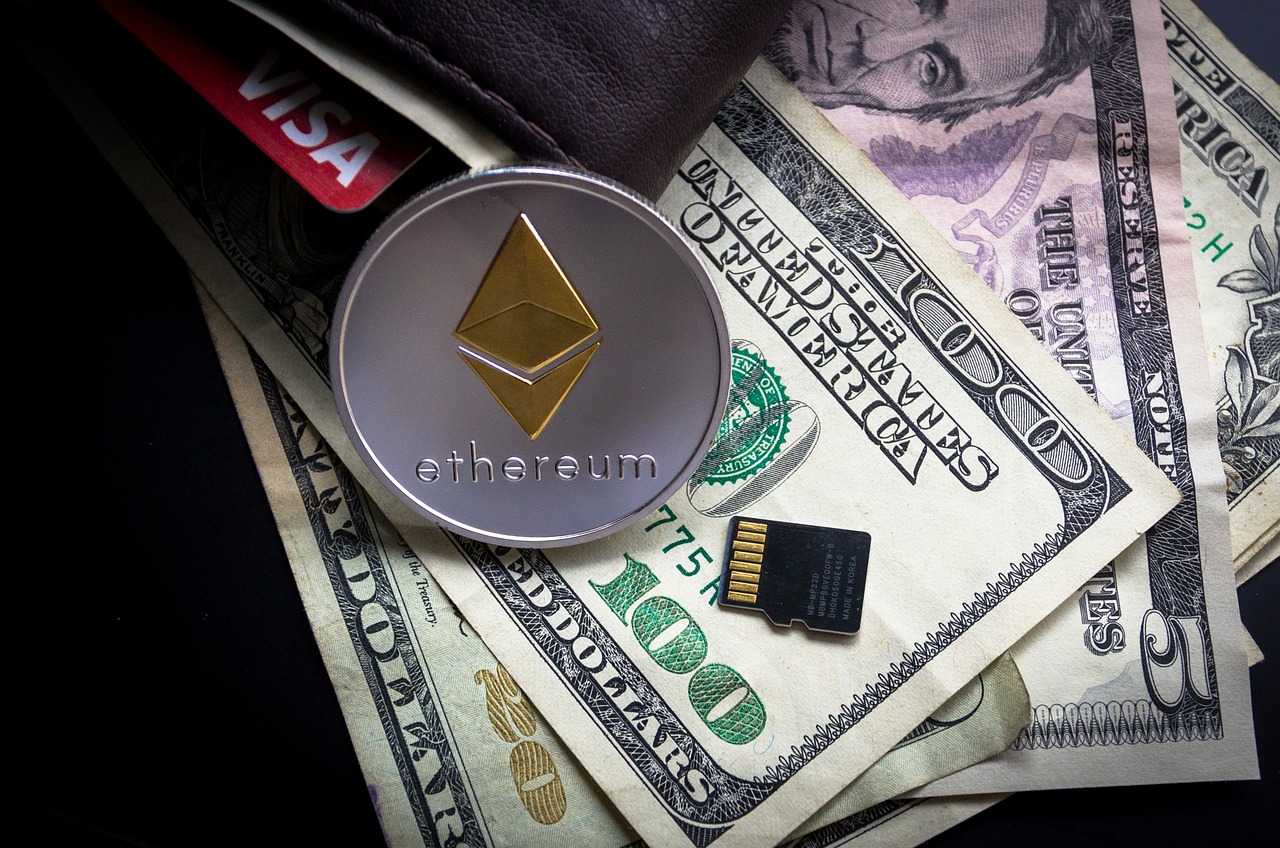
Gold vs. Bitcoin
When it comes to investing, the age-old debate between gold and Bitcoin often resembles a high-stakes chess match. Both assets have their loyal proponents, but they serve different purposes and appeal to different types of investors. Gold has long been considered a safe haven during economic turmoil, a tangible asset that has stood the test of time. In contrast, Bitcoin, the pioneer of cryptocurrencies, is often seen as a revolutionary digital asset with the potential for significant returns. So, which one is the better investment?
To start, let's look at the fundamental characteristics of both assets. Gold is a physical commodity, limited in supply, and has intrinsic value due to its properties and historical significance. On the other hand, Bitcoin operates on a decentralized network, governed by complex algorithms, with a capped supply of 21 million coins. This digital scarcity is one of the key factors driving Bitcoin's appeal as a new-age asset. While gold can be held and stored, Bitcoin exists purely in the digital realm, accessible via a blockchain.
One of the most compelling arguments for Bitcoin is its potential as a hedge against inflation. As central banks around the world print more money, the purchasing power of fiat currencies diminishes. Bitcoin, with its limited supply, is often likened to digital gold, offering a way to preserve wealth in an increasingly inflationary environment. In contrast, gold has historically been viewed as a hedge against inflation, but its performance can sometimes lag behind the rapid appreciation seen in Bitcoin.
In terms of volatility, Bitcoin is notorious for its price swings. While gold tends to exhibit more stability, Bitcoin's price can fluctuate wildly within a single day. This volatility can be a double-edged sword; it presents opportunities for substantial gains, but also poses significant risks. For investors seeking quick returns, Bitcoin might be the more attractive option, but those prioritizing stability may lean towards gold.
| Characteristic | Gold | Bitcoin |
|---|---|---|
| Type | Physical Commodity | Digital Asset |
| Supply | Limited (mined) | Capped at 21 million |
| Volatility | Low | High |
| Historical Use | Store of Value | Emerging Store of Value |
| Inflation Hedge | Yes | Yes |
Another aspect to consider is liquidity. Bitcoin can be traded around the clock on various exchanges, making it highly liquid. Gold, while also liquid, often requires physical delivery and may involve additional costs for storage and insurance. This ease of trading Bitcoin can be appealing for those looking to capitalize on market movements swiftly.
Ultimately, the choice between gold and Bitcoin boils down to individual investment goals and risk tolerance. If you prefer a time-tested asset that offers stability, gold might be your best bet. However, if you’re open to exploring the digital frontier and are willing to embrace the volatility for potentially higher returns, Bitcoin could be the asset for you. As the financial landscape evolves, the interplay between these two assets will likely continue to shape investment strategies for years to come.
- Is Bitcoin a better investment than gold? It depends on your investment goals. Bitcoin offers higher potential returns but comes with greater risk and volatility compared to gold.
- Can Bitcoin replace gold? While Bitcoin is often referred to as "digital gold," it is unlikely to fully replace gold due to gold's historical significance and physical properties.
- How do I invest in Bitcoin? You can invest in Bitcoin through cryptocurrency exchanges, wallets, or even some investment platforms that offer exposure to cryptocurrencies.
- What are the risks of investing in Bitcoin? Bitcoin is highly volatile, and its price can fluctuate dramatically. Additionally, regulatory changes and security concerns can pose risks to investors.

Commodity Trading Innovations
In the ever-evolving landscape of finance, the intersection of cryptocurrencies and commodities is sparking a revolution that is reshaping traditional trading practices. As digital assets gain traction, they are introducing innovative approaches to commodity trading, making it more accessible and efficient. Imagine a world where you can trade commodities like oil, gold, or wheat with the same ease as sending a text message. Sounds futuristic, right? But that’s precisely what blockchain technology and cryptocurrencies are bringing to the table.
One of the most significant innovations is the use of smart contracts. These self-executing contracts with the terms of the agreement directly written into code are changing the way trades are conducted. With smart contracts, trades can be executed automatically once certain conditions are met, eliminating the need for intermediaries. This not only speeds up transactions but also reduces costs associated with traditional trading methods. Imagine being able to buy a barrel of oil without waiting for a broker to finalize the deal—it's a game changer!
Moreover, the rise of decentralized finance (DeFi) platforms is democratizing access to commodity trading. Traditionally, only institutional investors had the resources and connections to participate in commodity markets. Now, with DeFi, anyone with an internet connection can trade commodities directly on blockchain-based platforms. This shift is akin to opening the floodgates for individual investors, allowing them to diversify their portfolios without the hefty fees associated with traditional trading.
Additionally, the integration of tokenization is another groundbreaking innovation. Tokenization refers to the process of converting physical commodities into digital tokens that can be traded on blockchain networks. This not only enhances liquidity but also allows for fractional ownership, meaning that investors can buy a portion of a commodity rather than the whole asset. For example, instead of purchasing an entire gold bar, you can own a fraction of it represented by a digital token. This opens up new avenues for investment, particularly for those who may not have the capital to invest in whole commodities.
Furthermore, the transparency offered by blockchain technology is a significant advantage. Every transaction is recorded on a public ledger, making it easier to trace the origin of commodities and ensuring that they meet quality standards. This level of transparency can help reduce fraud, which has been a persistent issue in the commodities market. Think of it as a digital fingerprint for each commodity, ensuring that what you’re buying is exactly what it claims to be.
In summary, the innovations brought about by cryptocurrencies in commodity trading are not just enhancements; they represent a fundamental shift in how these markets operate. As we continue to embrace these changes, we can expect to see a more inclusive, efficient, and transparent trading environment. The future of commodity trading is not just bright; it's illuminated by the potential of blockchain technology and digital assets.
- What is tokenization in commodity trading? Tokenization is the process of converting physical commodities into digital tokens that can be traded on blockchain platforms, allowing for fractional ownership and increased liquidity.
- How do smart contracts work in trading? Smart contracts are self-executing contracts with the terms written in code, allowing trades to be executed automatically when conditions are met, reducing the need for intermediaries.
- What is decentralized finance (DeFi)? DeFi refers to financial services using smart contracts on blockchains, enabling individuals to trade commodities directly without relying on traditional financial institutions.
- How does blockchain enhance transparency in commodity trading? Blockchain records every transaction on a public ledger, making it easier to trace the origin of commodities and ensuring they meet quality standards, thus reducing fraud.
Frequently Asked Questions
- What are cryptocurrencies?
Cryptocurrencies are digital or virtual currencies that utilize cryptography for security. They are decentralized and based on blockchain technology, which ensures transparency and prevents fraud. Unlike traditional currencies issued by governments, cryptocurrencies operate on a peer-to-peer network, allowing for direct transactions without the need for intermediaries.
- How do cryptocurrencies impact traditional asset classes?
Cryptocurrencies influence traditional asset classes like stocks, bonds, real estate, and commodities by introducing new investment opportunities and altering market dynamics. For instance, they can serve as alternative investments that attract both retail and institutional investors, potentially affecting the valuations and stability of these traditional assets.
- Are cryptocurrencies more volatile than stocks?
Yes, cryptocurrencies are generally more volatile than traditional stocks. The rapid price fluctuations in the crypto market can be attributed to factors like market sentiment, regulatory news, and technological developments. This high volatility can offer significant rewards but also poses substantial risks for investors seeking stability.
- What risk management strategies should I consider when investing in cryptocurrencies?
Investors can employ several risk management strategies when integrating cryptocurrencies into their portfolios, such as diversifying their investments across different assets, setting stop-loss orders, and only investing what they can afford to lose. Additionally, staying informed about market trends and developments can help mitigate risks associated with crypto investments.
- How does institutional adoption of cryptocurrencies affect the stock market?
The growing interest from institutional investors in cryptocurrencies can significantly reshape the stock market landscape by increasing legitimacy and attracting more capital. As institutions allocate funds to digital assets, it can lead to greater acceptance and integration of cryptocurrencies into mainstream finance, influencing stock valuations and investor behavior.
- Can cryptocurrencies be used as a hedge against inflation?
Many investors view cryptocurrencies, particularly Bitcoin, as a potential hedge against inflation due to their limited supply and decentralized nature. As traditional currencies lose value during inflationary periods, cryptocurrencies may retain or increase their value, making them an attractive alternative for preserving purchasing power.
- What is tokenization of real estate?
Tokenization of real estate refers to the process of converting real estate assets into digital tokens on a blockchain. This innovation allows for fractional ownership, increased liquidity, and broader access to property investments. By tokenizing real estate, investors can buy and sell shares of properties more easily compared to traditional methods.
- How is blockchain technology improving property transactions?
Blockchain technology enhances property transactions by providing a secure and transparent platform for recording ownership and transaction history. This reduces the risk of fraud and simplifies the buying and selling process, making it faster and more efficient. Additionally, smart contracts can automate various aspects of property transactions, further streamlining the process.
- How do cryptocurrencies affect commodity pricing?
Cryptocurrencies can impact commodity pricing by introducing new trading dynamics and attracting different types of investors. For example, as Bitcoin gains popularity as a store of value, it may influence the demand for traditional commodities like gold. Furthermore, innovations in cryptocurrency trading can lead to new investment strategies in the commodities market.
- What are the key differences between gold and Bitcoin as stores of value?
Gold has been a traditional store of value for centuries, while Bitcoin is a relatively new digital asset. Gold is tangible and has intrinsic value, whereas Bitcoin is purely digital and relies on market perception. Both assets can serve as hedges against economic uncertainty, but their behaviors and market responses can differ significantly.



















